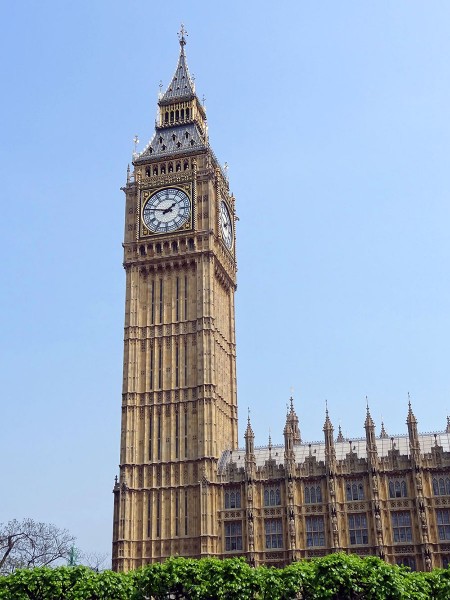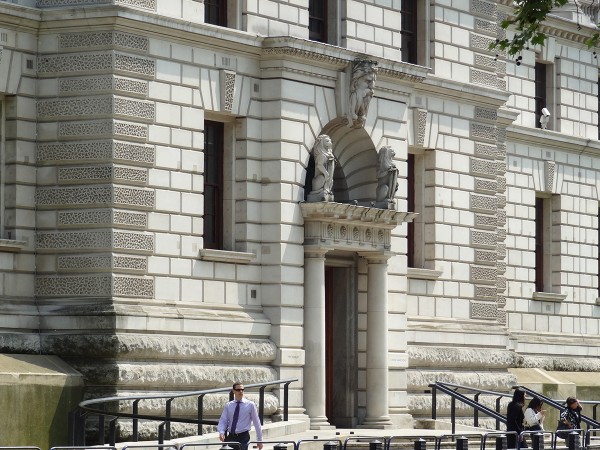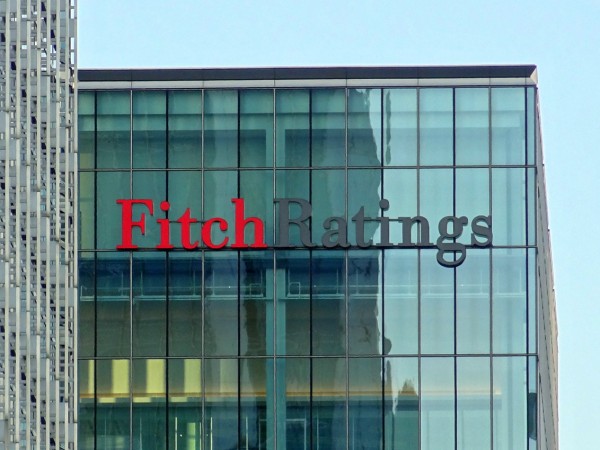 In a carefully argued article in the New Statesman, the UK Business Secretary, Vince Cable, considers the slow recovery in the economy and whether additional measures should be adopted. He sums up the current state of the economy as follows:
In a carefully argued article in the New Statesman, the UK Business Secretary, Vince Cable, considers the slow recovery in the economy and whether additional measures should be adopted. He sums up the current state of the economy as follows:
The British economy is still operating at levels around or below those before the 2008 financial crisis and roughly 15 per cent below an albeit unsustainable pre-crisis trend. There was next to no growth during 2012 and the prospect for 2013 is of very modest recovery.
Unsurprisingly there is vigorous debate as to what has gone wrong. And also what has gone right; unemployment has fallen as a result of a million (net) new jobs in the private sector and there is vigorous growth of new enterprises. Optimistic official growth forecasts and prophets of mass unemployment have both been confounded.
He argues that supply-side policies involving “a major and sustained commitment to skills, innovation and infrastructure investment” are essential if more rapid long-term growth is to be achieved. This is relatively uncontroversial.
 But he also considers the claim that austerity has kept the economy from recovering and whether policies to tackle the negative output gap should be adopted, even if this means a short-term increase in government borrowing.
But he also considers the claim that austerity has kept the economy from recovering and whether policies to tackle the negative output gap should be adopted, even if this means a short-term increase in government borrowing.
But crude Keynesian policies of expanding aggregate demand are both difficult to implement and may not take into account the particular circumstance of the current extended recession – or depression – in the UK and in many eurozone countries. World aggregate demand, however, is not deficient. In fact it is expanding quite rapidly, and with the sterling exchange rate index some 20% lower than before the financial crisis, this should give plenty of opportunity for UK exporters.
Yet expanding UK aggregate demand is proving difficult to achieve. Consumers, worried about falling real wages and large debts accumulated in the years of expansion, are reluctant to increase consumption and take on more debts, despite low interest rates. In the light of dampened consumer demand, firms are reluctant to invest. This makes monetary policy particularly ineffective, especially when banks have become more risk averse and wish to hold higher reserves, and indeed are under pressure to do so.
 So what can be done? He argues that there is “some scope for more demand to boost output, particularly if the stimulus is targeted on supply bottlenecks such as infrastructure and skills.” In other words, he advocates policies that will simultaneously increase both aggregate demand and aggregate supply. Monetary policy, involving negative real interest rates and quantitative easing, has helped to prevent a larger fall in real aggregate demand and a deeper dive into recession, but the dampened demand for money and the desire by banks to build their reserves has meant a massive fall in the money multiplier. Perhaps monetary policy needs to be more aggressive still (see the blog post, Doves from above), but this may not be sufficient.
So what can be done? He argues that there is “some scope for more demand to boost output, particularly if the stimulus is targeted on supply bottlenecks such as infrastructure and skills.” In other words, he advocates policies that will simultaneously increase both aggregate demand and aggregate supply. Monetary policy, involving negative real interest rates and quantitative easing, has helped to prevent a larger fall in real aggregate demand and a deeper dive into recession, but the dampened demand for money and the desire by banks to build their reserves has meant a massive fall in the money multiplier. Perhaps monetary policy needs to be more aggressive still (see the blog post, Doves from above), but this may not be sufficient.
Which brings Dr Cable to the political dynamite! He advocates an increase in public investment on infrastructure (schools and colleges, hospitals, road and rail projects and housing, and considers whether this should be financed, not by switching government expenditure away from current spending, but by borrowing more.
Such a strategy does not undermine the central objective of reducing the structural deficit, and may assist it by reviving growth. It may complicate the secondary objective of reducing government debt relative to GDP because it entails more state borrowing; but in a weak economy, more public investment increases the numerator and the denominator.
 He raises the question of whether the balance of risks has changed: away from the risk of increased short-term borrowing causing a collapse of confidence to the risk of lack of growth causing a deterioration in public finances and this causing a fall in confidence. As we saw in the blog post Moody Blues, the lack of growth has already caused one ratings agency (Moody’s) to downgrade the UK’s credit rating. The other two major agencies, Standard & Poor’s and Fitch may well follow suit.
He raises the question of whether the balance of risks has changed: away from the risk of increased short-term borrowing causing a collapse of confidence to the risk of lack of growth causing a deterioration in public finances and this causing a fall in confidence. As we saw in the blog post Moody Blues, the lack of growth has already caused one ratings agency (Moody’s) to downgrade the UK’s credit rating. The other two major agencies, Standard & Poor’s and Fitch may well follow suit.
The day after Dr Cable’s article was published, David Cameron gave a speech saying that the government would stick to its plan of deficit reduction. Not surprisingly commentators interpreted this as a split in the Coalition. Carefully argued economics from Dr Cable it might have been, but political analysts have seen it as a hand grenade, as you will see from some of the articles below.
When the facts change, should I change my mind? New Statesman, Vince Cable (6/3/13)
Keynes would be on our side New Statesman, Vince Cable (12/1/11)
Exclusive: Vince Cable calls on Osborne to change direction New Statesman, George Eaton (67/3/13)
Vince Cable: Borrowing may not be as bad as slow growth BBC News (7/3/13)
Vince Cable makes direct challenge to Cameron over economic programme The Guardian, Nicholas Watt (7/3/13)
Vince Cable Says George Osborne Must Change Course And Borrow More To Revive Growth Huffington Post, Ned Simons (6/3/13)
David Cameron and Vince Cable at war over route to recovery Independent, Andrew Grice (6/3/13)
 Vince Cable: Borrowing may not be as bad as slow growth BBC News, James Landale (6/3/13)
Vince Cable: Borrowing may not be as bad as slow growth BBC News, James Landale (6/3/13)
David Cameron: We will hold firm on economy BBC News (7/3/13)
 David Cameron: We will hold firm on economy BBC News (7/3/13)
David Cameron: We will hold firm on economy BBC News (7/3/13)
 Clegg Backs Cable Over Controversial Economy Comments LBC Radio, Nick Clegg (7/3/13)
Clegg Backs Cable Over Controversial Economy Comments LBC Radio, Nick Clegg (7/3/13)
It’s plain what George Osborne needs to do – so just get on and do it The Telegraph, Jeremy Warner (6/3/13)
Vince Cable’s plan B: a “matter of judgement” BBC News, Stephanie Flanders (7/3/13)
George Osborne needs to turn on the spending taps The Guardian, Phillip Inman (12/3/13)
Questions
- Why has monetary policy proved ineffective in achieving a rapid recovery from recession?
- Distinguish between discretionary fiscal policy and automatic fiscal stabilisers.
- Why has the existence of automatic fiscal stabilisers meant that the public-sector deficit has been difficult to bring down?
- In what ways has the balance of risks in using discretionary fiscal policy changed over the past three years?
- In what ways is the depression of the late 2000s/early 2010s (a) similar to and (b) different from the Great Depression of the early 1930s?
- In what ways is the structure of public-sector debt in the UK different from that in many countries in the eurozone? Why does this give the government more scope for expansionary fiscal policy?
- Why does the Office of Budget Responsibility’s estimates of the tax and government expenditure multipliers suggest that “if fiscal policy is to work in a Keynesian manner, it needs to be targeted carefully, concentrating on capital projects”?
- Why did Keynes argue that monetary policy is ineffective at the zero bound (to use Dr Cable’s terminology)? Are we currently at the zero bound? If so what can be done?
- Has fiscal tightening more than offset loose monetary policy?
 For years, Britain has suffered a decline in its manufacturing base relative to many of its competitors. In part this was the result of the success of the financial sector and the accompanying high exchange rate. But, with the problems of the financial sector since 2007 and the subsequent recession, attention has increasingly turned to ways of stimulating manufacturing capacity and the competitiveness of the export sector generally.
For years, Britain has suffered a decline in its manufacturing base relative to many of its competitors. In part this was the result of the success of the financial sector and the accompanying high exchange rate. But, with the problems of the financial sector since 2007 and the subsequent recession, attention has increasingly turned to ways of stimulating manufacturing capacity and the competitiveness of the export sector generally.
In other words, attention has turned to the supply side of the economy.
But what should be the features of a successful supply-side policy? Should it encourage competition and focus largely on deregulation and removing ‘red tape’ to encourage market forces to operate more efficiently and effectively? Or should it be more interventionist?
The Business Secretary, Vince Cable, has been in the headlines for criticising his own government’s policy and arguing for a more active supply-side policy – one that is more interventionist. The following podcasts, the second of which is an interview with Dr Cable, look at the arguments for a more active supply-side policy and the forms it could take. The articles look at some of the arguments in more detail.
Podcasts
 Industrial strategy ‘lacking in the UK’ BBC Today Programme, Mariana Mazzucato (6/3/12)
Industrial strategy ‘lacking in the UK’ BBC Today Programme, Mariana Mazzucato (6/3/12)
 Government ‘getting behind’ industry BBC Today Programme, Vince Cable (6/3/12)
Government ‘getting behind’ industry BBC Today Programme, Vince Cable (6/3/12)
Articles
Cable urges long-term plan for industry Financial Times, George Parker (12/2/12)
Cable defends concern over lack of vision Financial Times, Elizabeth Rigby and George Parker (6/3/12)
Vince Cable leaked letter: in full The Telegraph (6/3/12)
Rusting Britain threatens recovery The Telegraph, Alexander Baldock (4/3/12)
Vince Cable is Right: we “lack a compelling vision of where the country is heading” Birmingham Post, David Bailey (6/3/12)
Rebuilding Britain’s economy: the hunt for an ‘industrial strategy’ Citywire Money, Chris Marshall (29/2/12)
Companies must stop hoarding cash and start investing instead Observer, Will Hutton (19/2/12)
Britain needs to shape an industrial strategy Observer, Editorial (4/3/12)
Questions
- Distinguish between the terms ‘industrial strategy’, ‘market-orientated supply-side policy’ and ‘interventionist supply-side policy’
- Identify some ways in which innovations and productivity growth can be supported by government.
- Does interventionist supply-side policy inevitably involve the government spending more?
- If the government wishes to encourage a more entrepreneurial country, should this involve a careful mix of intervention and market liberalisation and, if so, what should the mix look like?
- Summarise the arguments in Vince Cable’s letter to the Prime Minister and Deputy Prime Minister.
- What are the lessons of Silicon Valley for the UK and other European countries?
- How important is successful demand-side policy for a successful supply-side strategy?
- Comment on the following quote from the Will Hutton article above: “British companies are running a cash surplus of some 6% of GDP, again the largest in the world, but are refusing to spend that cash on investment or innovation, preferring to hoard it, preserve profit margins or buy back their own shares. Business investment as a share of GDP is thus the lowest among large industrialised countries.”
The debate about how much and how fast to cut the deficit has often been presented as a replaying of the debates of the 1920s and 30s between Keynes and the Treasury.
The justification for fiscal expansion to tackle the recession in 2008/9 was portrayed as classic Keynesianism. The problem was seen as a short-term one of a lack of spending. The solution was seen as one of expansionary fiscal and monetary policies. There was relatively little resistance to such stimulus packages at the time, although some warned against the inevitable growth in public-sector debt.
But now that the world economy is in recovery mode – albeit a highly faltering one in many countries – and given the huge overhang of government deficits and debts, what would Keynes advocate now? Here there is considerable disagreement.
Vince Cable, the UK Business Secretary, argues that Keynes would have supported the deficit reduction plans of the Coalition government. He would still have stressed the importance of aggregate demand, but would have argued that investor and consumer confidence, which are vital preconditions for maintaining private-sector demand, are best maintained by a credible plan to reduce the deficit. What is more, inflows of capital are again best encouraged by fiscal rectitude. As he argued in the New Statesman article below
One plausible explanation, from Olivier Blanchard of the IMF, is that the Keynesian model of fiscal policy works well enough in most conditions, but not when there is a fiscal crisis. In those circumstances, households and businesses react to increased deficits by saving more, because they expect spending cuts and tax increases in the future. At a time like this, fiscal multipliers decline and turn negative. Conversely, firm action to reduce deficits provides reassurance to spend and invest. Such arguments are sometimes described as “Ricardian equivalence” – that deficits cannot stimulate demand because of expected future tax increases.
Those on the other side are not arguing against a long-term reduction in government deficits, but rather that the speed and magnitude of cuts should depend on the state of the economy. Too much cutting and too fast would cause a reduction in aggregate demand and a consequent reduction in output. This would undermine confidence, not strengthen it. Critics of the Coalition government’s policy point to the fragile nature of the recovery and the historically low levels of consumer confidence
The following articles provide some of the more recent contributions to the debate.
Keynes would be on our side New Statesman, Vince Cable (12/1/11)
Cable’s attempt to claim Keynes is well argued — but unconvincing New Statesman, David Blanchflower and Robert Skidelsky (27/1/11)
Growth or cuts? Keynes would not back the coalition – especially over jobs Guardian, Larry Elliott (17/1/11)
People do not understand how bad the economy is Guardian, Vince Cable (20/5/11)
The Budget Battle: WWHD? (What Would Hayek Do?) AK? (And Keynes?) PBS Newshour, Paul Solman (29/4/11)
Keynes vs. Hayek, the Rematch: Keynes Responds PBS Newshour, Paul Solman (2/5/11)
On Not Reading Keynes New York Times, Paul Krugman (1/5/11)
Would a More Expansionary Fiscal Policy Be Effective Right Now? Yes: On the Invisible Bond Market and Inflation Vigilantes Once Again Blog: Grasping Reality with a Prehensile Tail, Brad DeLong (12/5/11)
 Keynes, Crisis and Monopoly Capitalism The Real News, Robert Skidelsky and Paul Jay (29/4/11)
Keynes, Crisis and Monopoly Capitalism The Real News, Robert Skidelsky and Paul Jay (29/4/11)
Questions
- What factors in the current economic environment affect the level of consumer confidence?
- What are the most important factors that will determine whether or not a policy of fiscal consolidation will drive the economy back into recession?
- How expansionary is monetary policy at the moment? Is it enough simply to answer this question by reference to central bank repo rates?
- What degree of crowding out would be likely to result from an expansionary fiscal policy in the current economic environment? If confidence is adversely affected by expansionary fiscal policy, would this represent a form of crowding out?
- Why may fiscal multipliers have ‘turned negative’?
- For what reasons might a tight fiscal policy lead to an increase in aggregate demand?
- Your turn: what would Keynes have done in the current macroeconomic environment?
 In a carefully argued article in the New Statesman, the UK Business Secretary, Vince Cable, considers the slow recovery in the economy and whether additional measures should be adopted. He sums up the current state of the economy as follows:
In a carefully argued article in the New Statesman, the UK Business Secretary, Vince Cable, considers the slow recovery in the economy and whether additional measures should be adopted. He sums up the current state of the economy as follows: But he also considers the claim that austerity has kept the economy from recovering and whether policies to tackle the negative output gap should be adopted, even if this means a short-term increase in government borrowing.
But he also considers the claim that austerity has kept the economy from recovering and whether policies to tackle the negative output gap should be adopted, even if this means a short-term increase in government borrowing. So what can be done? He argues that there is “some scope for more demand to boost output, particularly if the stimulus is targeted on supply bottlenecks such as infrastructure and skills.” In other words, he advocates policies that will simultaneously increase both aggregate demand and aggregate supply. Monetary policy, involving negative real interest rates and quantitative easing, has helped to prevent a larger fall in real aggregate demand and a deeper dive into recession, but the dampened demand for money and the desire by banks to build their reserves has meant a massive fall in the money multiplier. Perhaps monetary policy needs to be more aggressive still (see the blog post, Doves from above), but this may not be sufficient.
So what can be done? He argues that there is “some scope for more demand to boost output, particularly if the stimulus is targeted on supply bottlenecks such as infrastructure and skills.” In other words, he advocates policies that will simultaneously increase both aggregate demand and aggregate supply. Monetary policy, involving negative real interest rates and quantitative easing, has helped to prevent a larger fall in real aggregate demand and a deeper dive into recession, but the dampened demand for money and the desire by banks to build their reserves has meant a massive fall in the money multiplier. Perhaps monetary policy needs to be more aggressive still (see the blog post, Doves from above), but this may not be sufficient. He raises the question of whether the balance of risks has changed: away from the risk of increased short-term borrowing causing a collapse of confidence to the risk of lack of growth causing a deterioration in public finances and this causing a fall in confidence. As we saw in the blog post Moody Blues, the lack of growth has already caused one ratings agency (Moody’s) to downgrade the UK’s credit rating. The other two major agencies, Standard & Poor’s and Fitch may well follow suit.
He raises the question of whether the balance of risks has changed: away from the risk of increased short-term borrowing causing a collapse of confidence to the risk of lack of growth causing a deterioration in public finances and this causing a fall in confidence. As we saw in the blog post Moody Blues, the lack of growth has already caused one ratings agency (Moody’s) to downgrade the UK’s credit rating. The other two major agencies, Standard & Poor’s and Fitch may well follow suit. Vince Cable: Borrowing may not be as bad as slow growth BBC News, James Landale (6/3/13)
Vince Cable: Borrowing may not be as bad as slow growth BBC News, James Landale (6/3/13) David Cameron: We will hold firm on economy BBC News (7/3/13)
David Cameron: We will hold firm on economy BBC News (7/3/13) Clegg Backs Cable Over Controversial Economy Comments LBC Radio, Nick Clegg (7/3/13)
Clegg Backs Cable Over Controversial Economy Comments LBC Radio, Nick Clegg (7/3/13)